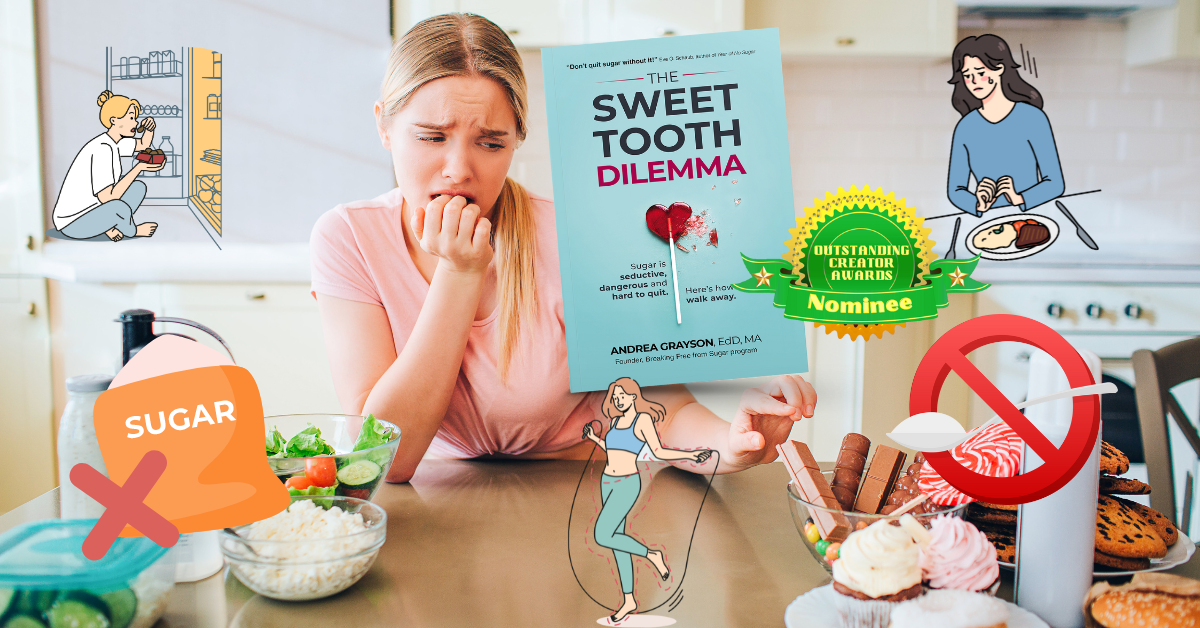|
Score: 92/100 (9.2 out of 10)
The Sweet Tooth Dilemma is a solid diet, health, and wellness book by Andrea Grayson! American has a problem, a BIG problem. Obesity and overweight run rampant as do many of the other problems that come with them: diabetes, cardiovascular disease, metabolic syndrome, and others. Even some forms of cancer may be linked to the way we eat and the extra fat we carry around our waists. This book shines a spotlight on perhaps the biggest culprit—the root—of the problem: the prevalence and overabundance of sugar in our food supply and the carb culture that has arisen over the past century. Our founder, Steven Seril, has not only been a part of the fitness industry for the last decade, but he is also a hardcore advocate for low-carb/low-sugar diets. He has particularly championed the Atkins and ketogenic diets as being simple, effective, and sustainable ways of eating. It works! This book reiterates a lot of what is covered in other low-sugar diet books like the Atkins New Diet Revolution by Dr. Richard Atkins and Good Calories Bad Calories by Gary Taubes. Several of Taubes's newer and shorter books are sometimes cited in this. However, where as those books looked at low-sugar dieting from a very scientific standpoint, Grayson's book takes on a much more personal tone. That's not to say that guys like Atkins, Taubes, Jimmy Moore, and Eric Westman didn't talk about their own personal experiences with their diets from time to time, but Grayson is very heavy on the anecdotal evidence, focusing mainly on her personal experience with eating less sugar. And Grayson had quite an experience! It's interesting that this is practically our second book in a row that features/discusses eating disorders, specifically overeating disorder. The previous book we read was Growth by Karen DeBois. And surprise, surprise, guess what that author's triggers were? Stress and Little Debbie's cupcakes. Of all the eating disorders, the one that gets taken the least seriously is by far overeating disorder, yet it is almost definitely the most prevalent. There are a lot of jokes about people who overeat or are overweight/obese, but it's no laughing matter when you think about it. There's something behind that overeating a lot of the time. There are consequences to obesity and being overweight including deadly ones like cardiovascular disease—still the #1 cause of preventable death in the United States. When you think about it that way, it's no laughing matter. Our founder has described his struggles with different eating disorders, and he resonated a lot with some of the descriptions in this book. For example, this author continuously talks about a “voice” (or “voices) that someone with an eating disorder might hear that compels them to either eat more, starve themselves, or hypercompensate (as in the case of bulimia). Sometimes you hear this voice(s) at the oddest times, including at 2 AM or after just having eaten a full meal. It's actually quite terrifying and unsettling. With that said, there may be some triggering content in here for those struggling with eating disorders. This book is about taking back control, and one of the best ways to do that is hormonally. Willpower, as the author acknowledges, is in limited supply. However, we can help our minds and bodies to not require so much willpower by avoiding or limiting one of the world's most addictive substances: sugar. It's actually true that when you decrease the amount of sugar and carbs in your diet, your appetite naturally decreases. This is likely an evolutionary adaptive response that human beings developed due to times of shortage. But here's the thing: it's almost like our culture and society is pushing against us—pushing sugar on us. It's in everything! The author repeats several times that it's even in things that we think are healthy for us like yogurt and granola bars. Frustratingly, they even inject it or pepper it onto most of our rotisserie chickens—pretty much ruining them for low-carbers. Sugar is part of party culture, seen in movies, TV shows, and commercials. Sugary foods are presented as sexy, bright, colorful, fun, and cool. It reminds us of the Camel cigarette/cigar controversy. High-sugar foods are staples in many cuisines. This book even talks about an unscrupulous practice/concept called the “bliss point” which is when a food manufacturer produces food that is deliberately at the perfect level of sweetness (and sometimes saltiness) to be addictive. And they test this on kids! One of the best techniques this book advocates is called pattern interrupt. This is when you identify the triggers that lead to you making poor food choices, then redirect or distract yourself with something healthier or more positive. Check this out on Amazon!
0 Comments
Leave a Reply. |
Archives
July 2024
Categories |

 RSS Feed
RSS Feed